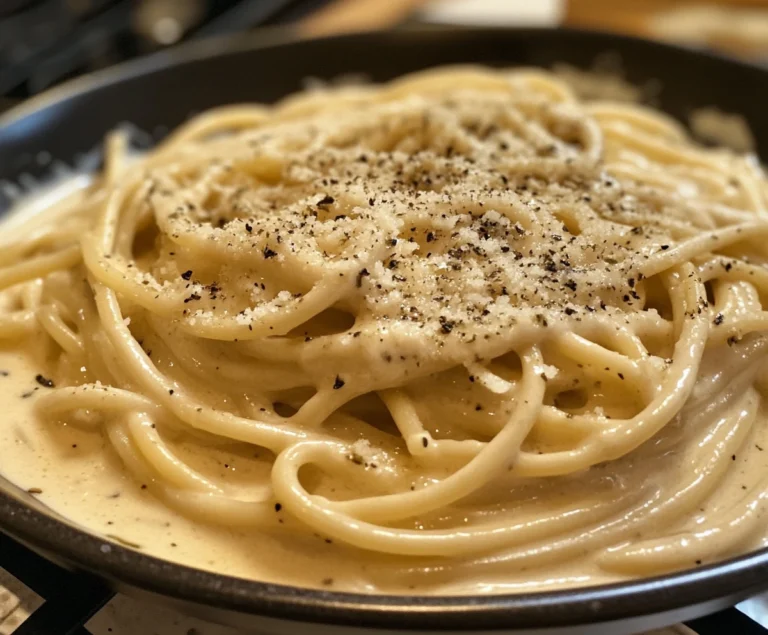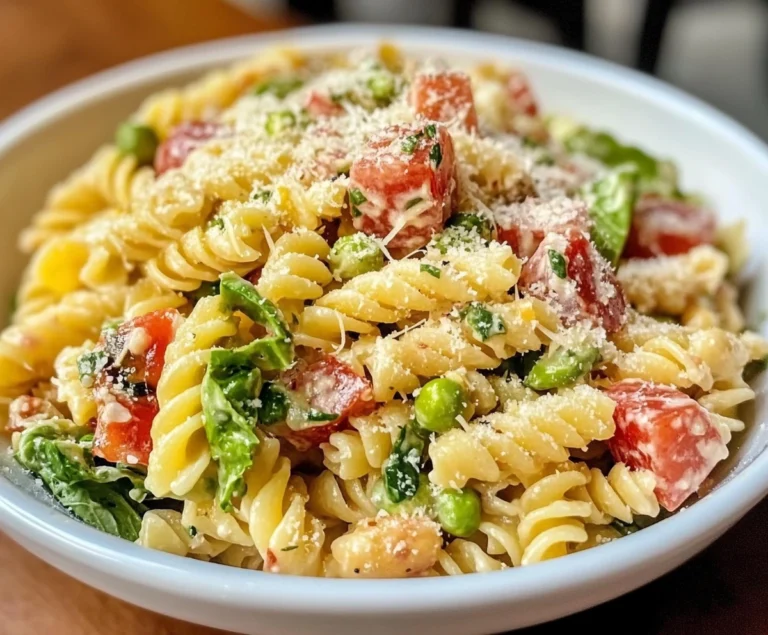What’s the Difference Between Tomato Soup and Tomato Bisque?
Tomato-based soups are beloved comfort foods, offering a warm, hearty, and often nostalgic meal. However, there is often confusion between two of the most popular varieties: tomato soup and tomato bisque. Although they both share a tomato base and can be similarly prepared, there are distinct differences in their ingredients, preparation methods, and final presentation. Understanding these differences will not only enhance your culinary knowledge but also help you choose the perfect dish to satisfy your taste buds or dietary needs.
What is Tomato Soup?
Tomato soup is a classic dish that is often made with a few simple ingredients: tomatoes, water or broth (either vegetable or chicken), and basic seasonings such as salt, pepper, and occasionally garlic or onion powder. It is known for its light, tangy flavor and is typically enjoyed with a side of grilled cheese or crusty bread. Unlike bisque, tomato soup does not contain any dairy, which makes it a lower-calorie option and suitable for vegan and vegetarian diets when made with vegetable broth.
Key Characteristics of Tomato Soup:
- Base Ingredients: Tomatoes, water or broth, and seasonings.
- Texture: Generally smooth but can vary depending on the method of preparation. It can be either chunky (if not blended) or velvety smooth when blended.
- Flavor Profile: Tangy and slightly acidic due to the tomatoes, with a hint of sweetness depending on the variety of tomatoes used and any additional ingredients.
- Dietary Considerations: Typically low in calories and fat, especially when dairy and butter are not used. Suitable for vegetarian and vegan diets.
Popular Variations of Tomato Soup:
- Classic Tomato Soup: A smooth blend of tomatoes, onions, and garlic, simmered in broth and seasoned to taste.
- Roasted Tomato Soup: Adds depth of flavor by roasting the tomatoes (and sometimes other vegetables like bell peppers or onions) before blending them into the soup. The roasting process enhances the natural sweetness of the tomatoes and gives a slightly smoky flavor.
- Spicy Tomato Soup: Includes ingredients like red pepper flakes, cayenne pepper, or hot sauce to add a spicy kick. This variation is great for those who enjoy a bit of heat in their soups.
For those looking to experiment with tomato soup at home, consider trying a restaurant-style tomato bisque recipe, which combines traditional flavors with a creamy twist for a more indulgent experience.
What is Tomato Bisque?
Tomato bisque is a richer, creamier version of tomato soup that includes the addition of dairy—typically heavy cream or whole milk. The term “bisque” originally comes from French cuisine, where it referred to a smooth, creamy soup made from crustaceans. However, in modern culinary contexts, the definition has broadened to include creamy vegetable soups as well, such as tomato bisque. This soup is often thicker and more luxurious, offering a velvety mouthfeel that makes it perfect for a more indulgent meal.
Key Characteristics of Tomato Bisque:
- Base Ingredients: Tomatoes, heavy cream or whole milk, butter, onions, garlic, and sometimes additional seasonings like herbs (basil, thyme) and spices.
- Texture: Extremely smooth and creamy, achieved by blending the ingredients until very fine and adding dairy to enrich the consistency.
- Flavor Profile: Rich and full-bodied, with a creamy undertone that balances the natural acidity of the tomatoes.
- Dietary Considerations: Higher in calories and fat than tomato soup due to the inclusion of cream or butter. Not suitable for vegan or dairy-free diets unless modifications are made (such as using coconut milk or a dairy-free cream alternative).
Popular Variations of Tomato Bisque:
- Classic Tomato Bisque: Combines tomatoes, cream, butter, and aromatics like onions and garlic for a rich, smooth finish.
- Smoky Tomato Bisque: Adds smoked paprika or roasted red peppers for a subtle smoky flavor that complements the creaminess of the bisque. Try the Smoky Chicken Tomato Bisque Recipe for a unique twist that includes chicken.
- Herbed Tomato Bisque: Incorporates fresh or dried herbs such as basil, thyme, or oregano to enhance the flavor and add complexity to the soup.
For more insights into the variations of tomato bisque and how it compares to other soups, visit this comparison guide to explore the nuances in ingredients and preparation.
Key Differences Between Tomato Soup and Tomato Bisque
While both tomato soup and tomato bisque share a similar base of tomatoes, their differences become clear when examining their ingredients, texture, and flavor.
1. Ingredients:
- Tomato soup is typically made with a base of tomatoes, water or broth, and basic seasonings. It may also include some vegetables for added flavor but generally lacks dairy.
- Tomato bisque includes the same tomato base but adds cream or milk, as well as butter and aromatics like onions and garlic, which contribute to its thicker, richer consistency.
2. Texture and Consistency:
- Tomato soup is usually thinner and lighter, with a more broth-like consistency if dairy is not added. The texture can be smooth or slightly chunky, depending on whether the soup is blended.
- Tomato bisque has a velvety, smooth texture that is achieved by blending the soup to a fine consistency and adding cream, resulting in a thicker, richer mouthfeel.
3. Flavor Profile:
- Tomato soup tends to have a lighter, more acidic flavor that is primarily tomato-forward. It can be slightly sweet or tangy, depending on the tomatoes used.
- Tomato bisque is richer and more complex in flavor due to the addition of cream and butter, which add a creamy, slightly sweet undertone that balances the natural acidity of the tomatoes.
Health Considerations
When deciding between these two soups, it’s important to consider their nutritional profiles.
Nutritional Comparison:
- Tomato Soup: Typically lower in calories and fat, especially when made without cream or butter. It is a good source of vitamins A and C and provides a moderate amount of fiber. It is also often vegetarian or vegan, depending on the broth used, making it a versatile option for various dietary preferences.
- Tomato Bisque: Generally higher in calories and fat due to the addition of cream or butter. While it offers a richer flavor and more satisfying mouthfeel, it may not be suitable for those on a low-fat or calorie-restricted diet. However, it can still provide essential nutrients like vitamins A and C and a good amount of calcium from the dairy.
Dietary Modifications:
- For a Lower-Calorie Bisque: Consider using a lighter cream or milk substitute, such as coconut milk or almond milk, to reduce the calorie and fat content while maintaining a creamy texture.
- For a Vegan or Dairy-Free Version: Replace the dairy with coconut milk or cashew cream, both of which provide a rich, creamy texture without the use of animal products.
For a refreshing alternative to a hot tomato-based dish, consider pairing either soup with a Tomato Cucumber Feta Salad, which offers a crisp, cool contrast to the warmth and creaminess of the soup.
Common Misconceptions About Tomato Soup and Bisque
A few common misconceptions about tomato soup and tomato bisque can often lead to confusion in the kitchen or at the dining table.
Misconception #1: All Bisques Are Made with Seafood
While it’s true that the term “bisque” originally referred to creamy soups made from shellfish, the culinary world has since broadened its definition. Today, “bisque” can refer to any creamy, pureed soup made with vegetables or other ingredients, such as tomato bisque. This modern interpretation allows for a variety of flavors and ingredients, making bisque a versatile option beyond its seafood origins.
Misconception #2: Cream of Tomato Soup and Tomato Bisque Are the Same
Another source of confusion is the difference between cream of tomato soup and tomato bisque. While both are creamy, the key difference lies in their preparation and ingredients:
- Cream of Tomato Soup: Typically involves a tomato soup base with milk added for creaminess. It is usually less rich and has a lighter consistency than bisque.
- Tomato Bisque: Uses heavy cream or whole milk, which results in a richer, more luxurious texture and flavor profile.
Understanding these distinctions can help you make more informed choices when cooking or ordering soups.
How to Make Tomato Soup and Tomato Bisque at Home
Creating these soups at home allows you to customize them according to your taste preferences and dietary requirements. Here are step-by-step guides for each:
Tomato Soup Recipe:
- Ingredients:
- 1 tablespoon olive oil
- 1 medium onion, chopped
- 2 garlic cloves, minced
- 1 can (28 ounces) crushed tomatoes
- 2 cups vegetable or chicken broth
- Salt and pepper to taste
- Fresh basil or thyme (optional)
- Instructions:
- Heat olive oil in a large pot over medium heat. Add chopped onions and sauté until translucent, about 5 minutes.
- Add minced garlic and cook for an additional 1-2 minutes, until fragrant.
- Pour in the crushed tomatoes and broth. Bring to a boil, then reduce heat and simmer for 20-30 minutes.
- Use an immersion blender to blend the soup until smooth, or transfer it to a blender in batches.
- Season with salt, pepper, and fresh herbs if desired. Serve hot with a side of crusty bread or grilled cheese.
Tomato Bisque Recipe:
- Ingredients:
- 2 tablespoons butter
- 1 medium onion, chopped
- 2 garlic cloves, minced
- 2 tablespoons all-purpose flour
- 1 can (28 ounces) crushed tomatoes
- 2 cups chicken or vegetable broth
- 1 cup heavy cream
- Salt and pepper to taste
- Fresh basil or parsley (optional)
- Instructions:
- Melt butter in a large pot over medium heat. Add chopped onions and sauté until soft and translucent, about 5 minutes.
- Add minced garlic and cook for another minute, until fragrant.
- Stir in the flour and cook for 1-2 minutes to form a roux.
- Gradually add the crushed tomatoes and broth, stirring continuously to avoid lumps. Bring to a boil, then reduce heat and simmer for 20 minutes.
- Stir in the heavy cream and simmer for an additional 10 minutes, until the soup thickens.
- Use an immersion blender to blend the soup until smooth, or transfer it to a blender in batches.
- Season with salt, pepper, and fresh herbs if desired. Serve hot with a sprinkle of freshly grated Parmesan cheese.
For additional recipes and variations, consider exploring this comprehensive guide on tomato soups and bisques to enhance your cooking experience.
Popular Recipes and Variations
Both tomato soup and tomato bisque have numerous variations that cater to different tastes and cultural influences:
- Campbell’s Tomato Soup and Bisque: A commercial favorite known for its consistency and convenience, offering a reliable option for a quick and easy meal.
- Italian Tomato Soup with Basil: Features fresh tomatoes and basil, offering a Mediterranean flavor profile that pairs well with grilled cheese or crusty bread.
- Spicy Mexican Tomato Bisque: Adds a spicy twist with chili peppers and cumin, perfect for those who enjoy a bit of heat.
- Tomato and Red Pepper Bisque: Combines roasted red peppers with tomatoes for a smoky, sweet flavor that adds complexity to the classic bisque.
For a chilled soup option perfect for summer, try a Cucumber Gazpacho, which provides a refreshing contrast to the warmth and richness of bisques and soups.
Pairing Suggestions
When serving tomato soup or tomato bisque, consider these pairing suggestions to enhance your dining experience:
- Grilled Cheese Sandwich: A classic pairing for tomato soup, the crispy, buttery bread and gooey cheese complement the tangy tomato flavor.
- Crusty Bread: Whether it’s a French baguette, sourdough, or ciabatta, a slice of crusty bread is perfect for dipping into either soup.
- Salad: A light, refreshing salad, such as a Tomato Cucumber Feta Salad, can provide a crisp contrast to the rich flavors of the bisque.
- Roasted Vegetables: Serve with a side of roasted vegetables, like zucchini or bell peppers, for a wholesome, balanced meal.
Conclusion
Understanding the differences between tomato soup and tomato bisque can help you make an informed choice based on your dietary needs and flavor preferences. While both soups start with a base of tomatoes, tomato bisque elevates the experience with its creamy, rich texture and flavor. In contrast, tomato soup offers a lighter, more straightforward tomato flavor that can be both refreshing and comforting. With these insights, you can enjoy both soups to their fullest and perhaps even experiment with making them at home, tailoring each recipe to suit your taste.
Whether you’re looking for a comforting bowl of classic tomato soup or a luxurious, creamy tomato bisque, these versatile dishes are sure to satisfy and delight. Happy cooking!







